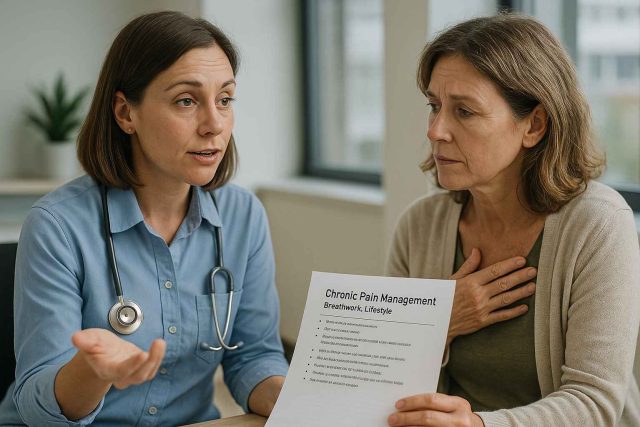When it comes to preventing HIV, information can mean the difference between risk and protection. The good news? Science-backed strategies for avoiding HIV are more effective—and accessible—than ever before. But with so many options available, which HIV prevention methods truly work?
Whether you’re seeking protection for yourself, a partner, or the wider community, understanding today’s most effective tools is essential. This article breaks down the most reliable ways to prevent HIV, offering practical insight for real-life application. By exploring medication, behavioral strategies, and viral suppression, you’ll gain clarity on what matters most.
Table of Contents
- Medication-Based HIV Prevention
- Barrier Protection and Behavioral Tools
- U=U: Treatment as Prevention
- How to Choose the Right HIV Prevention Strategy
Medication-Based HIV Prevention
For many people, medical prevention offers powerful protection against HIV. The two main pharmaceutical options are PrEP (pre-exposure prophylaxis) and PEP (post-exposure prophylaxis).
PrEP is a daily pill or long-acting injection taken by HIV-negative individuals to prevent infection. Medications like Truvada and Descovy are FDA-approved and widely prescribed. When taken as directed, PrEP reduces the risk of HIV from sex by up to 99% and from injection drug use by at least 74%.
Recently, injectable PrEP (Apretude) has added a convenient, bimonthly alternative to daily pills. This method benefits those who struggle with daily adherence or seek more privacy.
PEP, on the other hand, is a short-term treatment used after potential HIV exposure. It must be started within 72 hours of the event and taken for 28 days. PEP is often prescribed in emergency situations—such as condom failure or sexual assault—and is available in emergency rooms or clinics.
Both options are highly effective but require medical consultation. To connect with a provider, visit Healthcare.pro for help finding HIV prevention services near you.
Barrier Protection and Behavioral Tools
Medication is not the only way to prevent HIV. Consistent and correct use of barrier methods—especially condoms—remains one of the most effective HIV prevention methods available to everyone.
External (male) condoms and internal (female) condoms create a physical barrier that blocks HIV from passing during sex. Latex and polyurethane condoms are particularly effective and widely available. When used correctly, they not only prevent HIV but also reduce the risk of other sexually transmitted infections (STIs).
Moreover, needle exchange programs have significantly lowered HIV transmission among people who inject drugs. By providing access to clean syringes and safe disposal, these programs reduce needle sharing—a major route of infection.
Another key prevention strategy involves regular HIV testing and knowing your status. The earlier HIV is diagnosed, the sooner treatment can begin. Early detection also prevents unintentional transmission to partners.
Behavioral changes—such as reducing the number of sexual partners, avoiding sex under the influence of drugs or alcohol, and engaging in open communication about STI status—also contribute to a strong prevention plan.
To learn more about HIV testing and behavioral strategies, visit AIDS.org.
U=U: Treatment as Prevention
One of the most powerful public health messages today is U=U, which stands for Undetectable = Untransmittable. This means that a person living with HIV who maintains an undetectable viral load through consistent treatment cannot transmit the virus through sex.
Decades of research support this concept. Antiretroviral therapy (ART), when taken daily, reduces the viral load in the blood to such low levels that it becomes undetectable in lab tests. Studies like PARTNER and HPTN 052 have shown zero transmissions in thousands of condomless sex acts between serodiscordant couples (where one partner is HIV-positive and the other is HIV-negative).
This method not only prevents HIV but also helps reduce stigma. U=U reinforces the idea that people living with HIV can enjoy full, healthy, and safe relationships. It’s one of the most transformative insights in HIV prevention today.
If you or someone you know is living with HIV, staying on ART and attending regular checkups is critical. For more information, explore treatment resources at AIDS.org.
How to Choose the Right HIV Prevention Strategy
Choosing the best HIV prevention methods depends on your individual lifestyle, access to healthcare, and personal risk level. Some people benefit from combining strategies—for instance, taking PrEP while also using condoms and getting tested regularly.
Start by asking a few important questions:
- How often are you exposed to potential risk?
- Do you have access to a knowledgeable provider?
- Are you in a monogamous relationship, or do you have multiple partners?
- Can you commit to a daily medication routine, or would an injection be easier?
If you inject drugs, access to clean syringes and supervised treatment programs can reduce harm while connecting you to broader care services.
Everyone’s needs are different, but one thing is certain: HIV prevention methods are more effective today than ever before. The key is finding what works for your life—and sticking with it.
FAQs
What is the most effective way to prevent HIV?
There is no single best method for everyone. However, PrEP, condoms, and U=U-based treatment are among the most effective strategies when used correctly and consistently.
Can you get HIV from oral sex?
The risk of HIV from oral sex is very low but not zero. Using condoms or dental dams can reduce that risk further.
Is PrEP safe for long-term use?
Yes. PrEP is generally safe and well-tolerated. Your doctor will monitor kidney function and other health markers during use.
How do I know if PrEP is right for me?
If you are HIV-negative and at risk—through sex or drug use—you may be a good candidate. Talk to a healthcare provider to discuss options.
What is the U=U campaign?
U=U means that a person living with HIV who is on effective treatment and has an undetectable viral load cannot transmit the virus through sex.
Disclaimer:
This content is not medical advice. For any health issues, always consult a healthcare professional. In an emergency, call 911 or your local emergency services.
